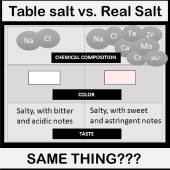








find religion! church
kiva! hyvä! iloinen! pikkumaatila
get stung! beehives
be hospitable! host-a-hive
be antisocial! facespace
 1
1












Brenda
Bloom where you are planted.
http://restfultrailsfoodforestgarden.blogspot.com/
 2
2




Xisca - pics! Dry subtropical Mediterranean - My project
However loud I tell it, this is never a truth, only my experience...









find religion! church
kiva! hyvä! iloinen! pikkumaatila
get stung! beehives
be hospitable! host-a-hive
be antisocial! facespace













sally ayers wrote:I have been experimenting with kimchi for the past several months and I can't seem to get around it tasting too salty.
Works at a residential alternative high school in the Himalayas SECMOL.org . "Back home" is Cape Cod, E Coast USA.









Ask me about food.
How Permies.com Works (lots of useful links)





Xisca - pics! Dry subtropical Mediterranean - My project
However loud I tell it, this is never a truth, only my experience...









Xisca Nicolas wrote: How cold should it be for keeping months?
I should say: "what is the maximum warmth"...
Xisca Nicolas wrote:
If you use any container, how do you keep it pressed down inside?
Works at a residential alternative high school in the Himalayas SECMOL.org . "Back home" is Cape Cod, E Coast USA.




Xisca - pics! Dry subtropical Mediterranean - My project
However loud I tell it, this is never a truth, only my experience...




 3
3




Jane




 1
1















Ask me about food.
How Permies.com Works (lots of useful links)









Jane




Renate Haeckler wrote:If you look at the Nourishing Traditions cookbook, a lot of their ferments use whey instead of salt. I like the salt ferments better. I read the sodium lactate that is made when the lactic acid from the lactofermentation mixes with the salt, is really strong at killing candida. Dairy ferments don't have nearly as much sodium lactate because they don't have the salt.















Ask me about food.
How Permies.com Works (lots of useful links)





John Kindziuk wrote:You can save this juice to jump start the next production.
trying to turn my thumb green





|
Why does your bag say "bombs"? The reason I ask is that my bag says "tiny ads" and it has stuff like this:
The new gardening playing cards kickstarter is now live!
https://www.kickstarter.com/projects/paulwheaton/garden-cards
|






